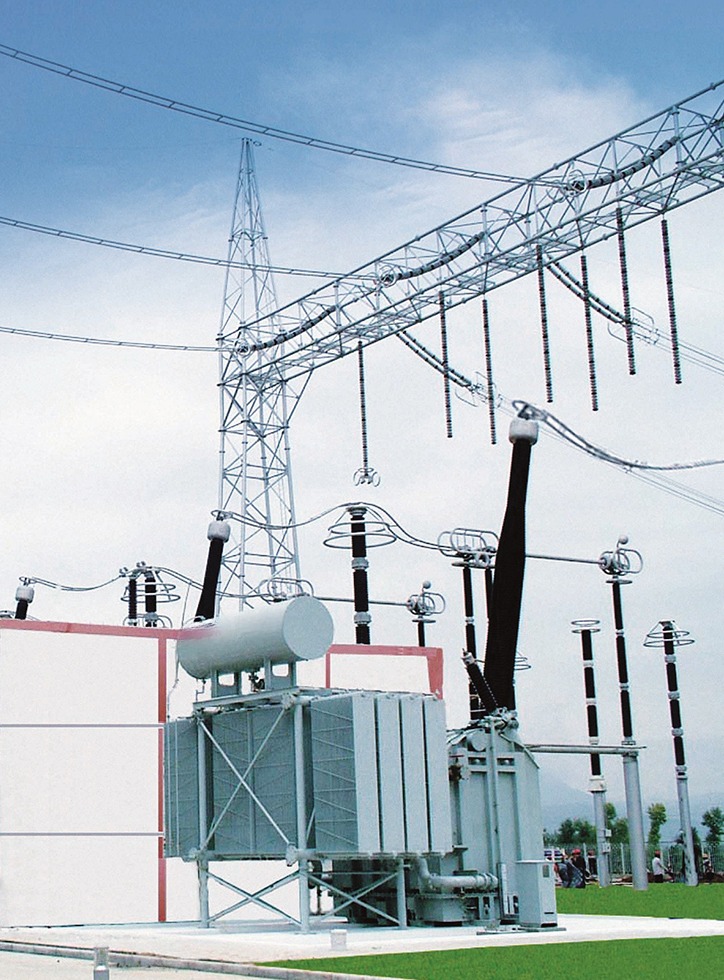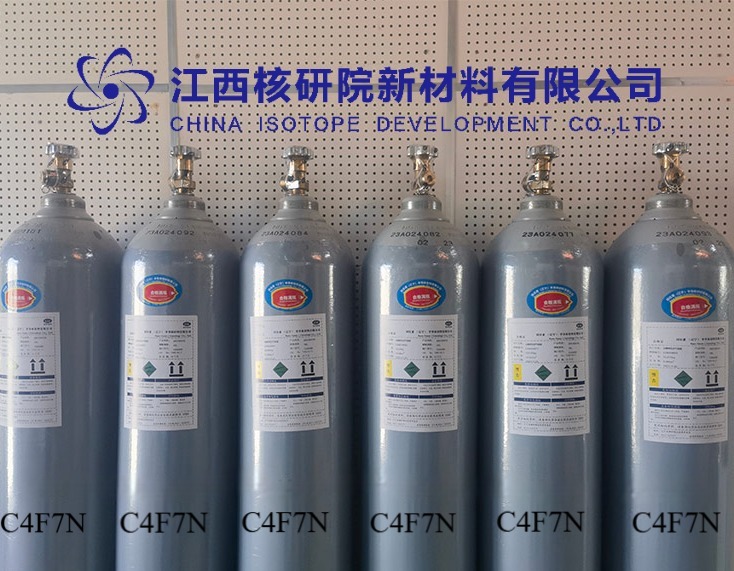Eco-Friendly Power Solutions: How C4F7N Redefines High-Performance Gas Insulation Markets
BY Tao, Published August 28, 2025
Introduction to C4F7N and the Quest for Sustainable Insulation
As the global energy landscape shifts toward sustainability, the demand for eco-friendly alternatives in high-voltage electrical systems has never been greater. Heptafluoroisobutyronitrile (C4F7N), a fluorinated specialty gas, is emerging as a transformative solution, offering a low global warming potential (GWP) alternative to sulfur hexafluoride (SF6), the long-standing standard for electrical insulation. With over 30 years of experience in specialty gases, I have seen the evolution of fluorocarbons and their critical role in advancing technology while addressing environmental concerns. C4F7N, with its exceptional dielectric properties and reduced environmental impact, is redefining the gas insulation market, enabling greener power solutions for high-voltage applications.
This article explores the properties, production, applications, and market impact of C4F7N, highlighting its role in sustainable energy systems. By combining technical expertise with clear, accessible explanations, we aim to demonstrate how C4F7N is reshaping the future of electrical insulation, supported by the latest research and industry developments.
Chemical and Physical Properties of C4F7N
C4F7N, chemically known as 2,3,3,3-tetrafluoro-2-(trifluoromethyl)propanenitrile, is a fluorocarbon with a unique molecular structure that makes it ideal for high-performance insulation. Its key properties include:
-
Molecular Structure: C4F7N features a nitrile group (-C≡N) bonded to a perfluorinated carbon backbone, enhancing its chemical stability and dielectric strength.
-
Physical State: At room temperature, C4F7N is a colorless, odorless gas, easily liquefied under moderate pressure for storage and transport.
-
Boiling Point: Approximately -4.7°C at standard pressure, allowing it to remain gaseous in most operational environments.
-
Dielectric Strength: When mixed with buffer gases like CO2 or N2, C4F7N achieves a dielectric strength up to 2.2 times that of SF6, making it highly effective for insulating high-voltage equipment.
-
Global Warming Potential (GWP): With a GWP of ~2,100, C4F7N is a significant improvement over SF6’s GWP of 23,500, aligning with global environmental regulations.
-
Thermal Stability: C4F7N resists decomposition at high temperatures, ensuring reliability in arc-quenching applications where electrical arcs generate intense heat.
-
Atmospheric Lifetime: At ~30 years, C4F7N’s atmospheric lifetime is far shorter than SF6’s 3,200 years, reducing its long-term environmental impact.
These properties make C4F7N a versatile and sustainable choice for high-voltage insulation, balancing performance with environmental responsibility.
Production Methods of C4F7N
Producing C4F7N at the ultra-high purity levels required for electrical applications is a complex process. The primary synthesis methods include:
1. Fluorination of Organic Nitriles
The most common method involves fluorinating perfluorinated alkene precursors with nitrogen-containing reagents:
[ \ce{(CF3)2C=CF2 + CN- \rightarrow (CF3)2CFC≡N} ]
This reaction, catalyzed by metal fluorides, requires precise control to achieve high yields and purities above 99.9%, essential for dielectric applications.
2. Electrochemical Fluorination (ECF)
Electrochemical fluorination uses an electrolytic cell with anhydrous hydrogen fluoride to fluorinate organic precursors. While effective, this method is energy-intensive and requires extensive purification to remove trace impurities, ensuring compatibility with sensitive electrical systems.
3. Advanced Purification Techniques
Post-synthesis, C4F7N undergoes fractional distillation and adsorption to achieve ultra-high purity. Companies like Asia Isotope International have developed proprietary purification processes to meet the stringent demands of the electrical and semiconductor industries.
Emerging research into sustainable synthesis methods, such as catalytic fluorination using renewable feedstocks, aims to reduce the environmental and economic costs of C4F7N production, enhancing its scalability.
Role in High-Voltage Electrical Insulation
C4F7N’s primary application is in high-voltage electrical systems, where it serves as a sustainable alternative to SF6. Its key uses include:
1. Gas-Insulated Switchgear (GIS)
Gas-insulated switchgear is essential for compact, high-voltage power distribution in urban and renewable energy systems. C4F7N, typically mixed with CO2 or N2 (e.g., 15-20% C4F7N/80-85% CO2), provides dielectric performance comparable to SF6 while significantly reducing GWP. For example, a 2023 study in IEEE Transactions on Dielectrics and Electrical Insulation found that a 20% C4F7N/80% CO2 mixture achieves 95% of SF6’s dielectric strength, making it a viable replacement for GIS in power grids.
2. Circuit Breakers and Arc Quenching
Circuit breakers rely on dielectric gases to quench electrical arcs during circuit interruption. C4F7N’s thermal stability and rapid arc-cooling properties ensure reliable performance in high-voltage circuit breakers, particularly in renewable energy applications like wind and solar farms. Its ability to withstand high temperatures without decomposing enhances equipment longevity.
3. Gas-Insulated Transmission Lines (GIL)
Gas-insulated transmission lines enable efficient, low-loss power transmission over long distances. C4F7N’s high dielectric strength allows for compact GIL designs, reducing the land footprint and supporting sustainable grid modernization. This is particularly critical for integrating renewable energy sources into urban power networks.
4. Environmental Benefits
By replacing SF6, C4F7N reduces greenhouse gas emissions in electrical systems. SF6’s long atmospheric lifetime and high GWP make it a significant contributor to climate change, whereas C4F7N’s shorter lifetime and lower GWP align with regulations like the EU’s F-Gas Regulation (Regulation (EU) No 517/2014) and the Kyoto Protocol.
Applications Beyond Electrical Insulation
C4F7N’s versatility extends to other high-tech fields, leveraging its chemical stability and low environmental impact.
1. Semiconductor Manufacturing
In semiconductor fabrication, C4F7N is used as an etching gas in plasma etching processes to create precise patterns on silicon wafers. Its high selectivity and stability ensure minimal damage to underlying layers, making it ideal for producing microchips for AI, 5G, and IoT devices. Compared to traditional fluorocarbons like CF4, C4F7N offers improved etching precision and a lower GWP.
2. Specialty Chemical Synthesis
C4F7N’s nitrile group enables its use as a precursor in synthesizing fluorinated compounds for pharmaceuticals and agrochemicals. It participates in reactions like nucleophilic additions, producing intermediates for drugs targeting cancer, inflammation, and neurological disorders.
3. Emerging Refrigerant Applications
C4F7N is being explored as a component in low-GWP refrigerant blends for industrial cooling systems. Its thermal stability and low toxicity make it a promising candidate for replacing high-GWP hydrofluorocarbons (HFCs), supporting the Kigali Amendment’s phase-down goals.
Safety and Handling Protocols
C4F7N’s stability reduces some risks, but its handling requires rigorous protocols:
-
Storage: Store in corrosion-resistant, high-pressure cylinders (e.g., stainless steel) at low temperatures to minimize pressure buildup. Inert gas blanketing (e.g., nitrogen) prevents contamination.
-
Handling: Use explosion-proof equipment and leak-detection systems to manage potential releases. Decomposition products under high-voltage conditions (e.g., fluorinated byproducts) require monitoring.
-
Personal Protective Equipment (PPE): Workers should wear respiratory protection, chemical-resistant gloves, and eye protection to avoid exposure to potential byproducts.
-
Regulatory Compliance: Adhere to standards like IEC 62271-4 for gas-insulated equipment and local environmental regulations.
A 2018 SF6 leak in a German substation highlighted the risks of dielectric gases, emphasizing the need for safer alternatives like C4F7N and robust safety measures.
Recent Advances in C4F7N Research
Research into C4F7N is driving its adoption in sustainable applications:
-
Mixture Optimization: A 2024 study in Journal of Applied Physics optimized C4F7N/CO2 mixtures, achieving dielectric performance within 5% of SF6 with a 15% C4F7N blend. This has accelerated adoption in GIS and circuit breakers.
-
Decomposition Studies: Research in Environmental Science & Technology (2023) analyzed C4F7N’s decomposition under arc conditions, identifying non-toxic byproducts and informing safer equipment designs.
-
Sustainable Production: Pilot projects exploring bio-based fluorination methods are reducing the environmental footprint of C4F7N synthesis, with potential for large-scale implementation by 2030.
These advancements underscore C4F7N’s role in balancing performance and sustainability.
Market Trends and Economic Impact
The global specialty gas market, including C4F7N, was valued at USD 2.8 billion in 2023 and is projected to reach USD 4.5 billion by 2030, growing at a CAGR of 7.5%, according to industry reports. C4F7N’s adoption in high-voltage equipment and semiconductors is a key driver, fueled by global demand for sustainable energy solutions.
Europe, led by Germany and France, is at the forefront of C4F7N adoption due to strict F-Gas regulations. The Asia-Pacific region, particularly China, dominates production, with companies like Asia Isotope International scaling up high-purity C4F7N supply to meet global needs. The transition to renewable energy and the growth of the semiconductor industry are further boosting demand.
Challenges and Future Directions
C4F7N faces several challenges that must be addressed to ensure its widespread adoption:
-
Production Costs: C4F7N is more expensive to produce than SF6, requiring innovations in synthesis and economies of scale to improve affordability.
-
Equipment Retrofitting: Existing SF6-based systems may require modifications to accommodate C4F7N mixtures, posing logistical and cost challenges for utilities.
-
Regulatory Pressures: While C4F7N’s GWP is low, future regulations may demand even greener alternatives, necessitating ongoing research into ultra-low-GWP gases.
Looking ahead, C4F7N’s role in green energy and electronics is set to grow. Its use in next-generation GIS and circuit breakers will support the global shift to renewable energy, while its applications in semiconductor manufacturing will drive advancements in AI and IoT technologies. Innovations in recycling and sustainable synthesis will further enhance its environmental credentials, cementing C4F7N’s position as a leader in the gas insulation market.
Conclusion
Heptafluoroisobutyronitrile (C4F7N) is revolutionizing the gas insulation market, offering a low-GWP, high-performance alternative to SF6. Its exceptional dielectric strength, thermal stability, and versatility in electrical insulation, semiconductor etching, and chemical synthesis make it a cornerstone of eco-friendly power solutions. With over 30 years of expertise in specialty gases, I can affirm that C4F7N’s blend of technical prowess and environmental benefits positions it as a transformative force in sustainable energy and electronics. As research and adoption accelerate, C4F7N will play a pivotal role in shaping a greener, more efficient future.
Sources:
-
IEEE Transactions on Dielectrics and Electrical Insulation, 2023, “Dielectric Performance of C4F7N/CO2 Mixtures in GIS”
-
Journal of Applied Physics, 2024, “Optimization of C4F7N-Based Insulation Systems”
-
Environmental Science & Technology, 2023, “Decomposition Analysis of Heptafluoroisobutyronitrile”
-
Specialty Gas Market Report, 2023–2030 Projections
-
EU F-Gas Regulation (Regulation (EU) No 517/2014)
Would you like a deeper dive into any specific technical parameters or applications?
(Follow up our update articles on www.asiaisotopeintl.com or send your comments to tao.hu@asiaisotope.com for further communications)








